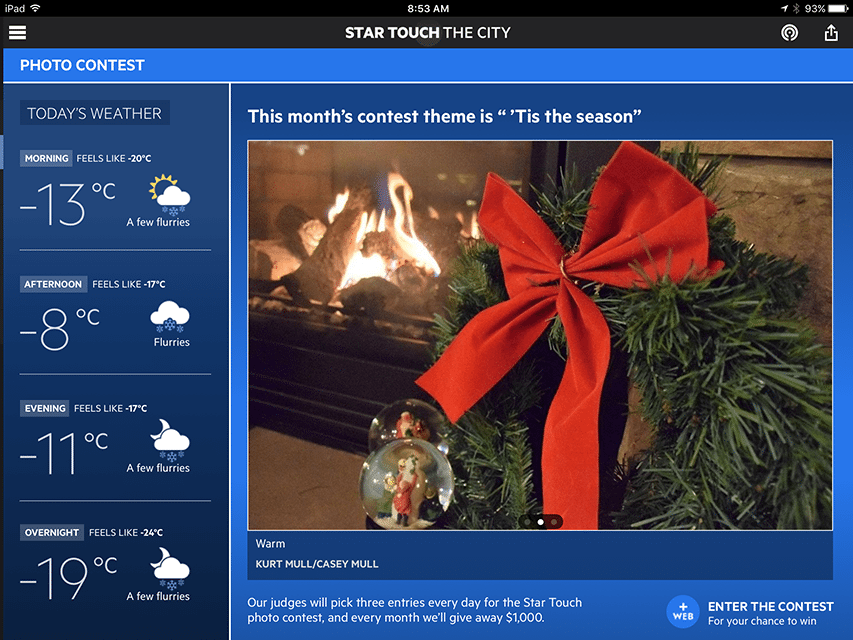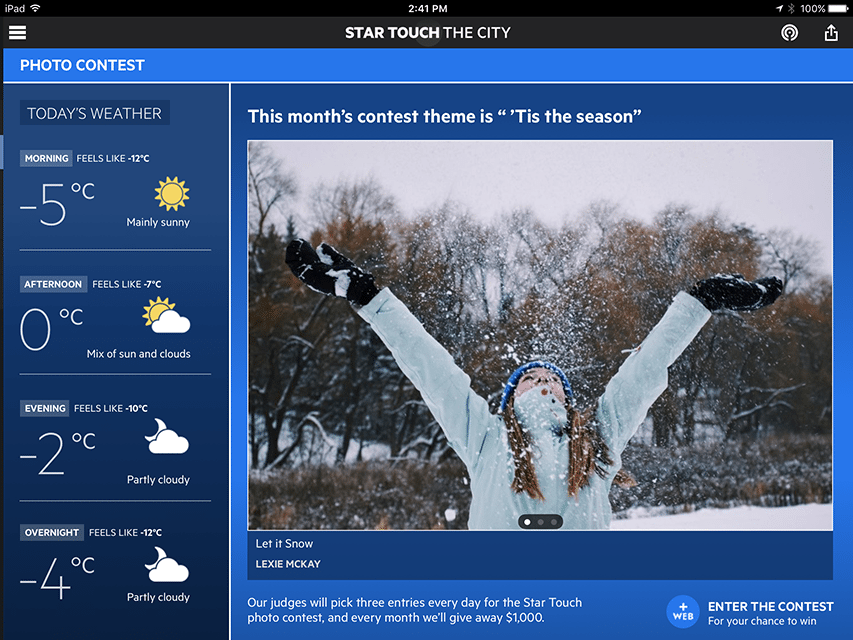When it comes to assessment, traditional pen-and-paper tests are pretty much as far from authentic as you can get: one student, performing in a singular modality, with the teacher as the only viewer. Projects can be more authentic, but until there is an audience outside of the classroom, it can be hard to get students to believe that the work that they’re doing is truly meaningful.
One of my goals for Comm Tech is to make the tasks that students are required to complete more authentic by providing them with a real audience for their work.
This quote is attributed to Rushton Hurley, an inspiring GAFE Summit keynote speaker who speaks often about project-based learning:

Giving students an authentic audience for their work means allowing them to share their work with the wider world. And Communications Technology, with its focus on the tools to create rich and meaningful media works, is the perfect environment to do just that.
As part of our second unit, we were focusing on photography: we learned some of the principles of photo composition, and we learned how to use digital SLR cameras in manual exposure mode to fully control the look of the photos we took. Rather than giving students a really prescriptive task for their summative assignment, we decided to make use of an existing opportunity – the monthly Toronto Star photography contest – to make our work a bit more authentic.
The theme for December’s contest was “Tis the season”, and everyone was encouraged to submit a photo that represents that idea for them. We piggybacked on that, and while the teacher in me couldn’t resist adding a few extra requirements — that students shoot in manual exposure mode and that they include a short write up about the technical and compositional choices that they made — students were psyched to complete the task. I couldn’t believe the quality of work that was being submitted. Rushton Hurley’s quote had never been so clear to me: the authenticity of the task truly motivated students to make sure that their work was as good as it could be. When we debriefed and discussed our photos in a class roundtable discussion, students were articulate about their photos, and most of them described spending an inordinate amount of time setting up their perfect shot.
That was what really struck me most: they weren’t upset about the time spent, or the number of attempts they had to make to capture the perfect shot. They worked tirelessly because they were invested in the task, and it didn’t seem to matter how much effort they had to put into it or how many times their shot failed, as long as they ended up with something they were proud of.
What a way to end off the term!
To really cap off the assignment and make it even more authentic, I was thrilled to share with the students that three members of our class had had their photos selected to be included in one of three daily photographs featured on the Star Touch app:



Believe me when I tell you that was among my proudest teacher moments ever! Although the students have yet to find out if they’ve won a prize (which would be the cherry on top!), they can be very proud of the recognition they’ve already been given. Authentic assessments, for the win!
Thanks to Mira, Casey & Lexie and their parents for giving me permission to share their work here.
Jennifer,
Amazing! I don’t even teach your students and I’m proud of them. Authentic real-world situations are a HUGE motivator.
One of the choices I implemented last year into my 30% Culminating Task for Grade 12 English, was an “Extension Project”. Students are given the option to revisit a previous assignment they felt they could continue working on, only they have to move it towards a professional product by connecting to the “real-world”. This could mean entering a story into an online forum, connecting with an alumni or sister school overseas— I had one student contact their future University professor to incorporate some credible sources into a science-based analytical paper.
I was very proud one particular girl, who revisited her speech on Feminism, and after adding content and further revision, entered it into a North American dramatic speech writing contest. She ended up winning the contest and went to New York last February to perform the speech at Carnegie Hall.
Moments like that, plus the examples you’ve shared here, are contagious. Students want to be taken seriously and these exemplars of authentic learning are gateways into intrinsic learning!
This is incredible and it’s so great for your students to have had this rich learning experience.
I would love to create a bank of things happening, like this contest, that relate to my curriculum and authentically connect my students to the world outside of the classroom. This might be a good undertaking for the holiday time of rest and reflection. Thanks for the dose of inspiration!
@jweening Congratulations! What an awesome example of authentic audience enabling rich/deep engagement and learning. Would those same students have spent as much time setting-up/tweeking/re-doing their shots had they not had had the contest as the silent pressure keeping them accountable……I don’t think so.
I love Rushton’s keynotes. So powerful. Thanks for reminding me of that great quote.
Congratulations @jweening! What an amazing and authentic project for your students! I love the idea of providing students with a real audience for their work, as a mode of motivating them to produce work that is meaningful to them. You’ve got me thinking about the upcoming term, and how I can create more opportunities for my students to have a real audience for their work. Thanks for the inspiration, and for sharing this authentic assessment win!
Great work from your students – and, of course, you! Congrats!
I wonder if you could explore ‘authentic’ more. I totally echo what’s been said above by @ckirsh @jmedved @edaigle and @nblair, and I’ve been exploring this in my role, and I wonder if you could push the students and ask them: “What would be authentic to you?” Right now, it is residing as something external – competitions, contests, etc…
The answers could lead you to where they lead me:
– it has to have a purpose that I can relate to
– it has to push me where I want to go, like a passion of mine
– it has to make sense for me to put the time in
When you get comments like this, you can have students putting the time in for ‘internal’ benefits. For example, getting students to create their own definition of ‘authenticity’ could lead them to creating a multi-disciplinary unit/assignment/task for themselves. They could create a proposal for two (or more) teachers, that allows them to pursue a deep and meaningful project that calls on the skills and understandings from two (or more) courses.
As a result of pursuing this, the authenticity came from within…
This is what it lead me to, and there were powerful, authentic results.
Love this @gnichols – thanks for pushing me to think more deeply about the word “authentic”. As we’re about to embark on our personalized learning journeys in the next few weeks, this seems like a great starting point for our discussion of how it’s going to unfold.